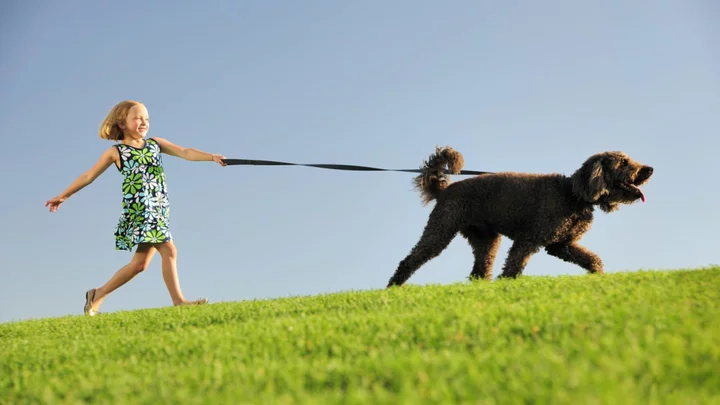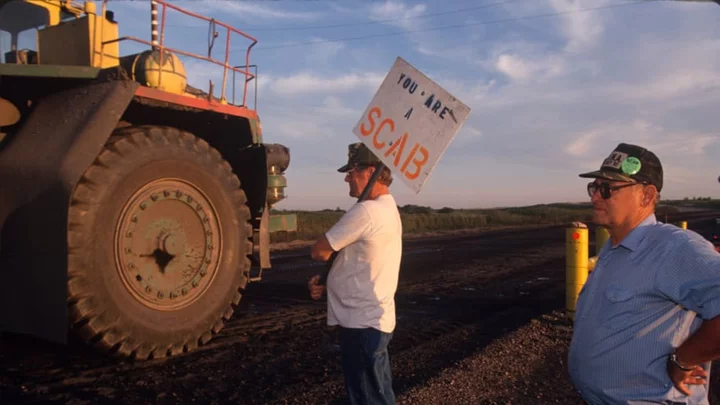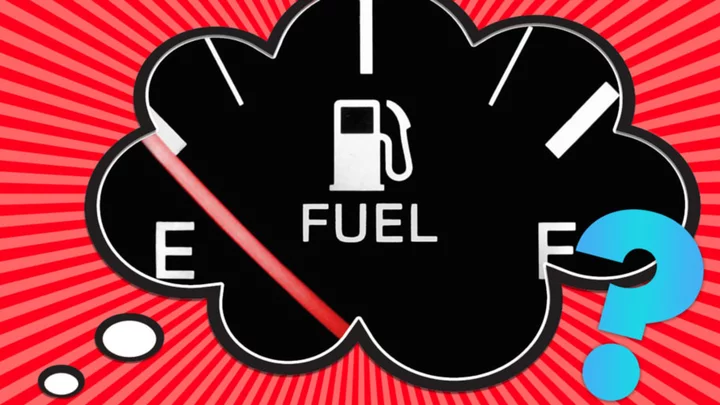The sight of an owner being dragged by a dog on a leash is one we’ve all seen: the person leaning backwards and gripping a taut leash, trying to slow down their overly excited pet. Most dogs love their walks and are naturally curious about their surroundings. But unfortunately, that curiosity can lead to some naughty behavior. Here are a few tricks to try to stop your dog from pulling on their leash.
Why Dogs Pull at Their Leashes
Daily walks give dogs a chance for them to explore and interact with the environment around them. But walking on a leash is an unnatural behavior for dogs. “The leash is a human tool that dogs don’t have any concept of when they come to us,” Sam Mountain, owner and professional dog trainer at Monkey Business Dog Training in Montreal, Canada, tells Mental Floss. “Off-leash, they walk in a very different way, rather than in a straight line down a sidewalk tethered to a human. It’s not natural to them at all. We need to teach them.”
Different breeds may pull for different reasons. A scent hound like a beagle might pull because they lock in a smell and get the urge to follow it. The dog’s size also makes a difference when it comes to leash pulling: “Consider two extremes: a Chihuahua, for example, has to trot to keep up with the human pace, but with a large breed like a Great Dane, their natural gait will be faster and longer. There is some frustration that kicks in for larger breeds—we are expecting them to walk at a much slower pace than what is natural for them,” Mountain explains.
How to Stop a Dog from Pulling on Their Leash
Fortunately, there are ways to stop your pup from turning their daily stroll into a battle of strength. These simple techniques will let you enjoy leisurely walks with your dog that balance human expectations with your pet’s need for sensory enrichment and exploration.
One technique is to stop in your tracks as soon as you feel your dog pulling on the leash. Don’t move until they create slack on the leash. “This puts the responsibility on the dog to figure out how to get you to walk forward again,” Mountain says. “They may sit, take a step back, or look at you. As soon as the leash tension is loose, you walk forward again.” The dog soon learns that when they feel pressure caused by the tugging on the collar or harness, they will not be able to move forward.
Another technique Mountain suggests is to change directions and go the other way as soon as your dog reaches the “danger zone” at the end of their leash. By changing direction when they begin to tug at the leash, dogs learn that pulling toward something actually gets them taken the other way. When they do come back beside you again on a slack leash, it creates an opportunity to reward your dog with a treat.
Teaching your dog to engage or check in with you regularly is a big part of any leash training. “We need to be able to get engagement from our dogs, especially in environments where their attention is pulled elsewhere. Your dog has to be able to focus.” Mountain says. “Anytime your dog offers you attention while out on a walk, say ‘yes’, and give them a treat.” If they’re rewarded for unrequested attention, they’ll likely continue to do it more often; this creates the engagement that’s really important for any type of training.
Make sure you don’t reward any type of leash tugging. “Every step taken behind a dog that is pulling is rewarding that behavior. We are teaching them to pull on the leash. If they spot their favorite bush and they drag you over there, it’s going to continue to happen. They got rewarded.” Mountain explains. As with most dog training, consistency is key. If you don’t expect the same behavior on every walk, the message gets confusing for your dog.
Pre-exercising your dog before trying to apply loose-leash training techniques is also a good idea, especially if you have a very excitable animal. Before your walk, let them run in a fenced-in backyard or engage in another type of vigorous play, followed by a short rest period—your dog will then be able to focus better on the training.
If you find you are not getting anywhere with the techniques you try on your own, seek help from a professional dog trainer. They’ll be able to pinpoint the distractions in your pet’s environment that are playing a part in the behavior and suggest some tweaks to make going for walks enjoyable for both you and your dog.
Related Tags
DOGS ENVIRONMENT ANIMALS BUSINESS PETS Pet Peeves Home / PET PEEVES








